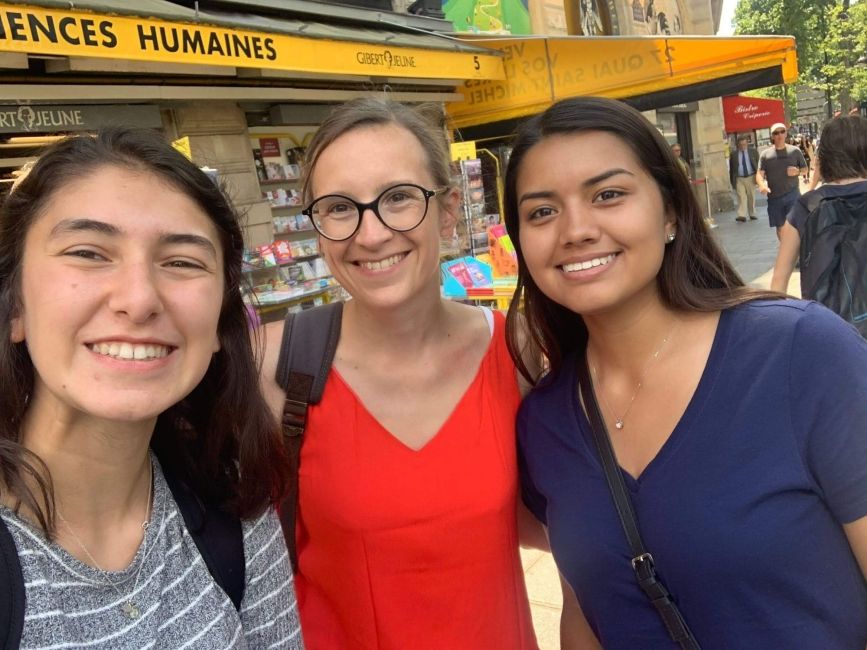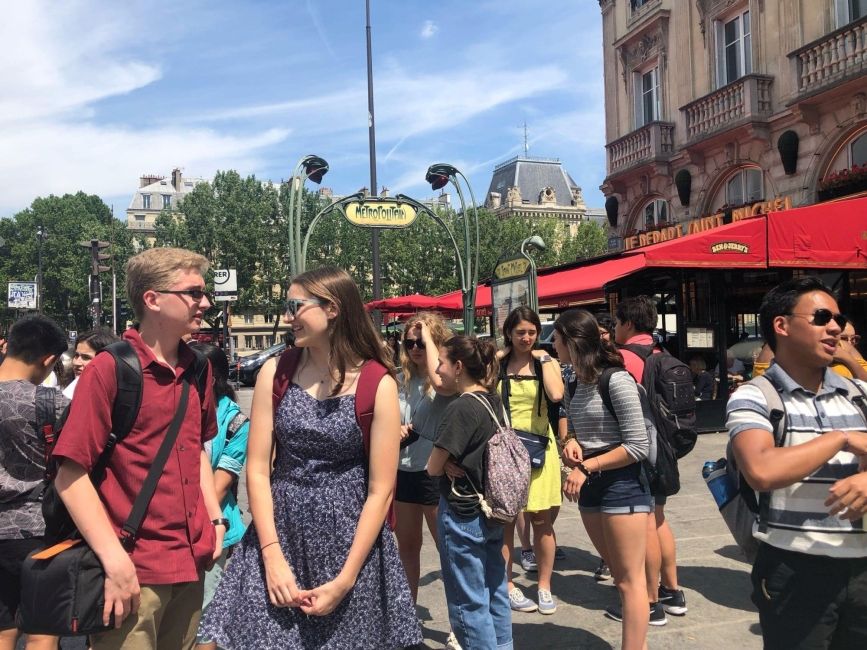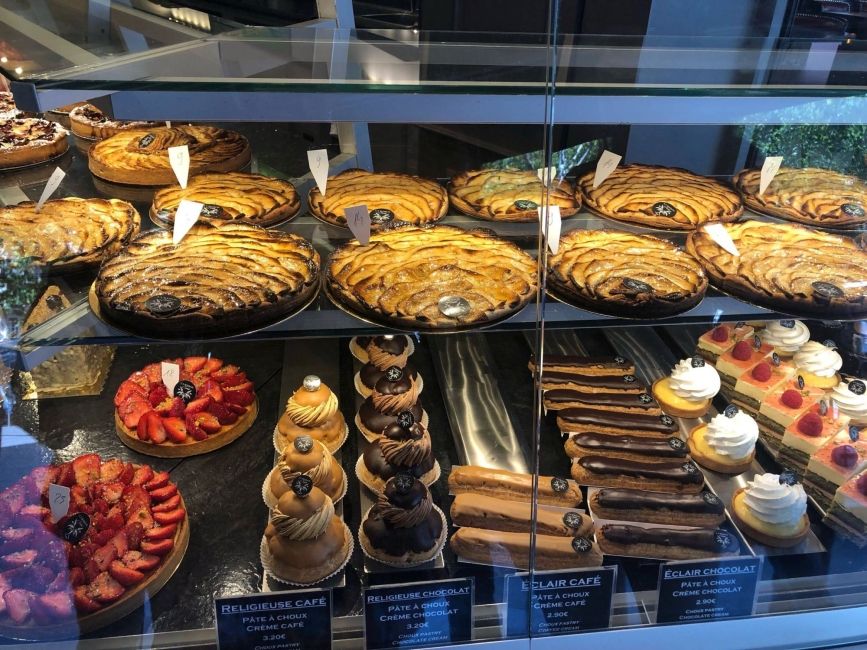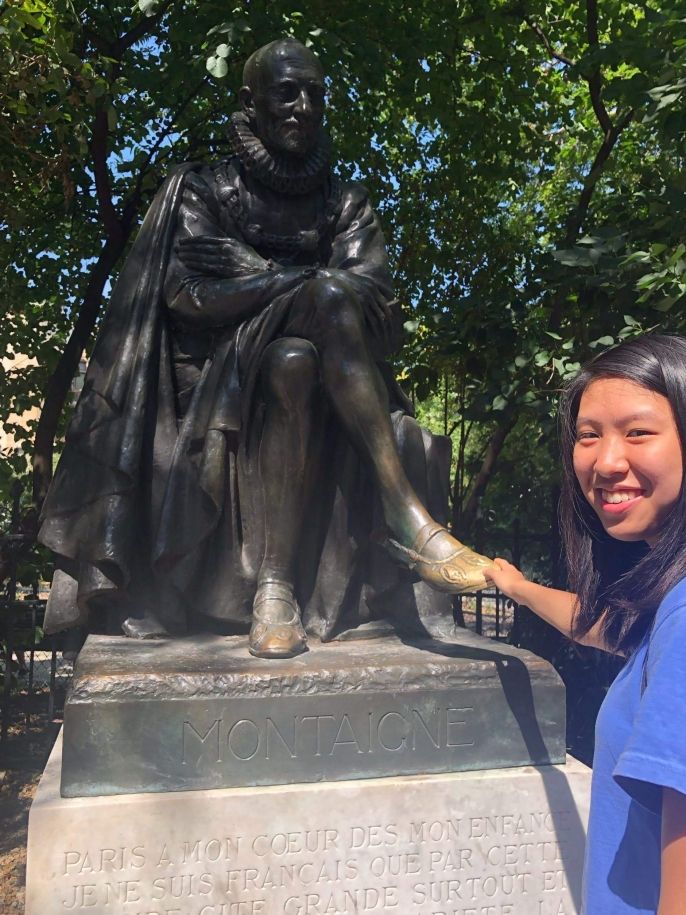Ozlefrançais et À la découverte du Quartier Latin (Community Conversations and Discovering the Latin Quarter)
Wednesday was another perfectly sunny, gorgeous day in Paris. The students participated in their first Ozlefrançais activity. This is an activity in which students introduce themselves to people in the neighborhood and converse with them about various topics. In the first Ozlefrançais, students in levels 1 & 2 asked locals in what part of Paris they live and asked for recommendations for places to see in Paris. Students in level 3 asked locals about historic sites in the area. The students were highly successful. Nous, les Program Leaders, sommes fières d’eux! (We are proud of them!)
Afterwards, we split up into three groups and went on guided tours of the Quartier Latin, which is located in the 5th and 6th “arrondissements” on the left bank of Paris. (Paris is divided up into 20 arrondissements or administrative districts.) The Quartier Latin got its name from the Latin language because, during the Middle Ages, Latin was spoken in and around the Sorbonne, the university.
Although we could not enter the beautiful cathedral of Notre Dame because of the devastating fire in April, we were able to get fairly close to it. The guide explained that, in the 19 century, people did not like Notre Dame and wanted it torn down. However, thanks to Victor Hugo’s novel, Notre Dame de Paris, the cathedral was saved.
Among the sites we saw were the Rue du Chat qui Pêche (the street of the fishing cat), the narrowest street in Paris; Shakespeare and Company; jazz clubs; the Sorbonne (one of the first colleges of the medieval University of Paris); and the Panthéon (originally built as a church dedicated to St. Geneviève, patron saint of Paris). Many famous French figures, including these writers - Voltaire; Jean-Jacques Rousseau; Émile Zola; and Victor Hugo, are buried in the Panthéon. Our tour ended in the beautiful Jardin du Luxembourg. The gardens were created in 1612 by Queen Marie de Medici.
Related Posts

Classroom Experience: A Springboard to Proficiency Growth with CIEE
The Language and Culture Program with CIEE kicked off its second session on July 30, 2024. The overall goal of the program is for students to develop proficiency in the... keep reading

À Sarcelles with Olympic stars of our own !
Last week, our students hopped on the RER D train to venture out to Sarcelles, a small town in the northern suburbs of Paris. Our group entered a brightly-lit domed... keep reading
Playing Detective : Escape game in the Marais !
This past Thursday, our students took it to the bustling streets of the Marais to participate in an interactive escape game, called ClueZ. The Marais, or the “Marsh”, is a... keep reading






